Favignana Island, located off the western coast of Sicily, is a small yet captivating gem. It takes its name from an ancient Roman fishing net known as ‘favonio.’ This island is known as a tranquil paradise with its turquoise waters, streets steeped in history, and natural beauty.
Touristic Significance: Favignana stands out as a tourist destination with its unique historical and natural attractions. Visitors flock to the island on warm summer days to experience unforgettable holidays with its crystal-clear seas and a variety of activities.
Natural Beauties: Among the island’s natural treasures are its crystal-clear waters, white sandy beaches, and unique caves. Additionally, the calm waters surrounding the island provide an ideal environment for snorkeling, diving, and underwater exploration.
Historical Riches: Favignana also captures attention with its historical riches. One can witness remnants from ancient times, structures dating back to the Roman era, and traditional Sicilian architecture. This is just one of the island’s hidden treasures waiting to be explored by history enthusiasts.
Cuisine and Seafood: Favignana Island is famous for its seafood. Here, freshly caught fish is enhanced with delicious seafood dishes. The island’s cuisine offers a culinary feast where local ingredients are meticulously used. Favignana Island not only entices visitors with its beauty but also with its cultural heritage, flavors, and enjoyable activities. In the next section, we will focus on practical information such as the island’s location and how to reach it.
Table of Contents
Where? The Perfect Location of Favignana Island
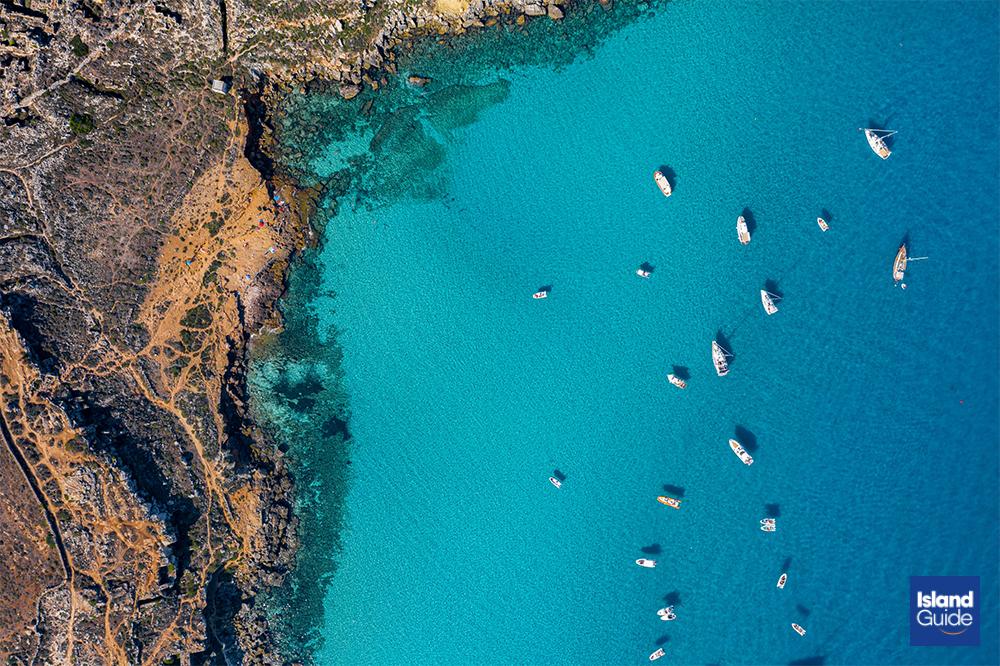
Favignana Island belongs to the Trapani province in the Sicily region of Italy. This enchanting island, located on the western coast of Sicily, is situated in the southwest Mediterranean, northeast of Tunisia. Favignana, the third-largest island in Sicily, is part of the Egadi Islands.
Geographical Location
The geographical location of the island stands out due to its crystal-clear waters and natural beauty. Its proximity to the mainland of Sicily makes Favignana easily accessible from a transportation perspective.
Proximity to Trapani
Trapani is often the preferred gateway to reach Favignana Island. Trapani, an important port city on the western coast of Sicily, provides transportation to Favignana through ferry services.
Egadi Islands
Favignana is part of the Egadi Islands, along with Levanzo and Marettimo islands. This group of islands offers a holiday experience intertwined with history, nature, and the sea.
How to Get There? Transportation Guide to Favignana Island
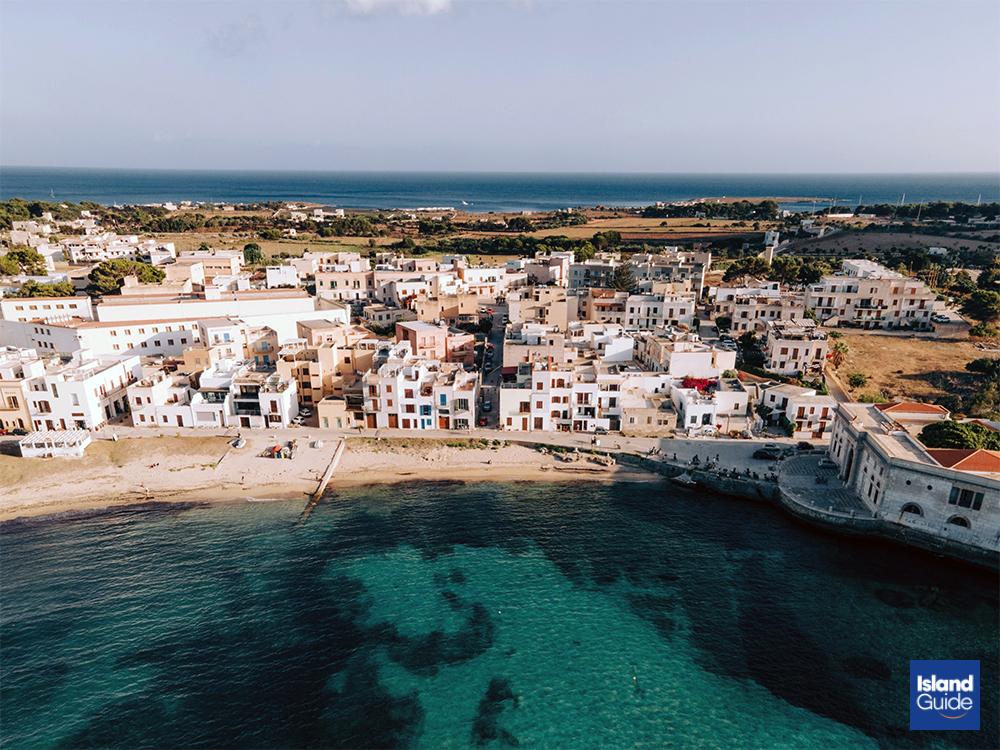
For those wishing to visit Favignana Island, transportation is quite easy and diverse. Access to the island is usually by sea, and the most common methods are ferries and sea buses.
Trapani Port
Trapani port is often the preferred choice for reaching Favignana. Trapani, located on the western coast of Sicily, is an important port city. Its proximity to the mainland of Sicily makes it convenient for reaching Favignana.
Ferries and Sea Buses
Ferry services from Trapani port provide transportation to Favignana Island. Ferries typically operate at regular intervals, with a journey duration of approximately 30-45 minutes. Additionally, during the summer months, it is possible to reach the island faster via sea buses from Trapani.
Air Travel
There is no direct airport on Favignana Island. However, you can reach nearby major Sicilian cities like Trapani or Palermo by plane. From there, you can continue your journey to Favignana port by ferry or sea bus.
Seasonal Transport Options
Transportation to Favignana is more frequent and regular, especially during the summer months. During this period, the number of ferry services increases, providing visitors with more options.
Rental Cars or Taxis
Once you arrive on Favignana Island by ferry or sea bus from Trapani, you can find rental cars and taxi services for getting around the island.
The chosen method of transportation to reach Favignana Island offers visitors the opportunity to explore the beauty of Sicily. In the next section, we will focus on the history and significance of Favignana Island.
History: The Intertwined Story of Favignana Island Over Time
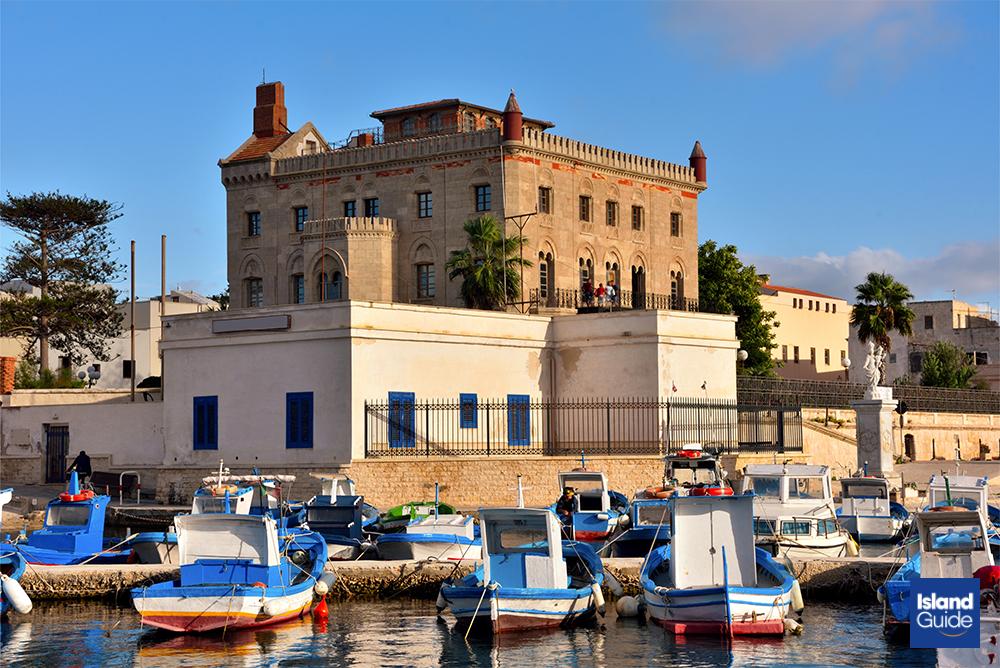
Favignana Island, with its rich history and past, is like an open-air museum. Stretching from ancient times to the present day, this history encompasses the island’s cultural riches and significant historical events.
Ancient Roman and Carthaginian Periods
Favignana, in ancient times, was particularly influenced by the Roman and Carthaginian Empires. Its location at the intersection of trade routes increased the island’s strategic importance.
Norman Rule
During the Middle Ages, Favignana came under the rule of Norman kings. During this period, the construction of fortresses and the strengthening of the island’s defense became important. These fortresses are still significant structures that showcase the island’s history.
Turkish and Genoese Invasions
In the 16th and 17th centuries, Favignana Island faced a series of attacks, especially during the rivalry between the Ottoman Turks and the Genoese, which increased the island’s strategic importance and witnessed many wars.
Fishing Tradition
A significant turning point in Favignana’s history was the beginning of the tuna fishing tradition. The abundance of tuna in the island’s waters revitalized the economy and strengthened the island’s maritime heritage.
Sicilian Unification and the Modern Era
In the mid-19th century, Favignana merged with the Kingdom of Sicily and became a part of Italy. During this period, agriculture and fishing activities still held significance, but tourism began to develop slowly.
The history of Favignana Island reflects a heritage carrying traces of various civilizations. This history offers visitors an opportunity to explore the past. In the next section, we will learn more about the architectural structures and cultural heritage of Favignana Island.
What Are the Structures? The Architectural Heritage of Favignana Island
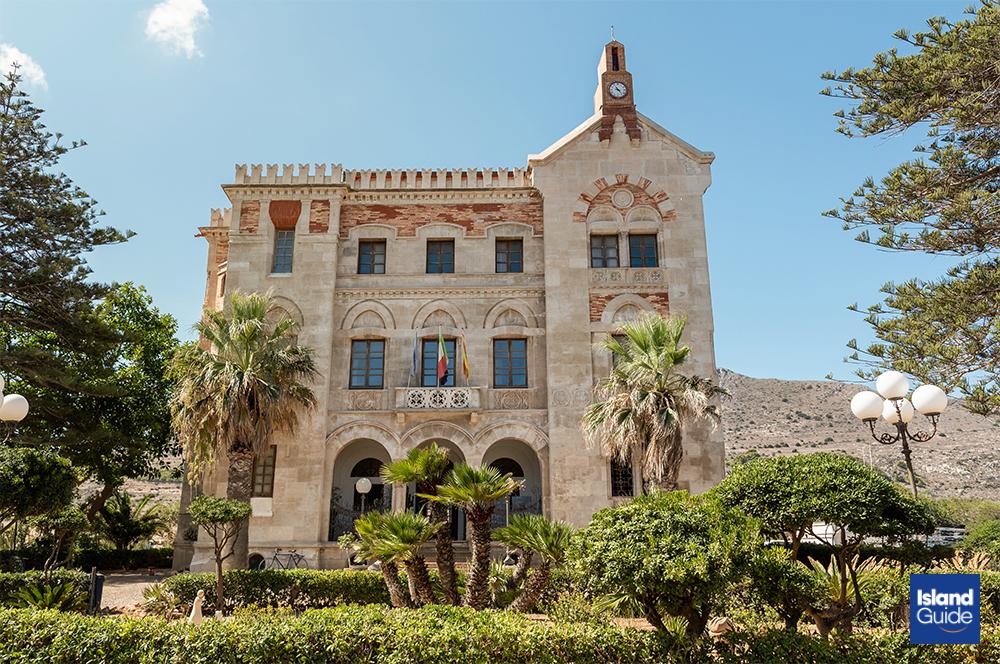
Favignana Island is home to a series of important architectural structures that reflect its historical and cultural richness. The streets and squares of the island are filled with these buildings carrying the traces of the past. Here are some of the significant structures that make up Favignana’s architectural heritage:
Santa Caterina Castle
Dating back to the Middle Ages, this castle played a crucial strategic role in the island’s history. Built to defend against maritime threats, the castle now offers visitors stunning views.
Florio Palace
Built by the Florio family during the peak of the tuna industry, this palace sheds light on the island’s economic and cultural past. Today, the building is used as a museum and is important for understanding the island’s history of tuna fishing.
Madonna de Lourdes Church
Built in the 18th century, this church reflects the island’s religious life. Its architecture is a blend of Gothic and Baroque styles.
Ex Stabilimento Florio delle Tonnare di Favignana e Formica
Located at the heart of the tuna industry, this historic complex includes tuna processing facilities, warehouses, and office buildings. It is a significant area that showcases the impressive legacy of the Florio family in the tuna industry.
Palazzo Florio
Built in the early 20th century, this palace belonged to the Florio family. It reflects the island’s social life and allows visitors to experience the elegance of the past.
Favignana Island’s architectural heritage offers visitors an opportunity to deeply understand the island’s history and cultural fabric. In the next section, we will focus on exploring the island’s natural beauty and seafood.
Natural Beauties: The Paradise Corner of Favignana Island
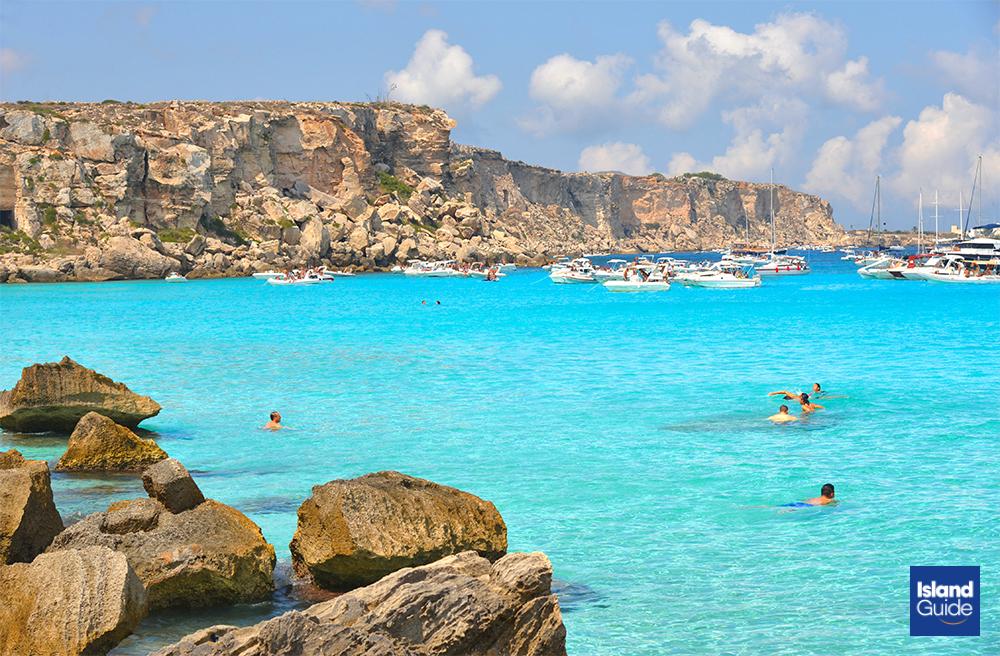
Favignana Island is not only famous for its historical and architectural riches but also for its unique natural beauty. The island’s tranquil beaches, crystal-clear waters, and natural formations offer visitors an unforgettable nature experience.
Cala Rossa Beach
One of the island’s most famous beaches, Cala Rossa dazzles with its white sandy shores and turquoise waters. This beach is an ideal spot for those looking to relax in a serene atmosphere with beautiful views.
Bue Marino Cave
Located in the northwest of Favignana, this cave is famous for its natural formation and transparent waters. The underwater treasures and mystical atmosphere of the cave provide visitors with a unique exploration opportunity.
Cala Azzurra Beach
With its azure waters and surrounding natural beauty, Cala Azzurra Beach is one of the island’s most romantic and peaceful spots. It is perfect for snorkeling enthusiasts.
Faraglioni di Favignana
Situated on the east side of the island, Faraglioni stands out with its tall cliffs and breathtaking views. It is an excellent location to watch the sunset or go for nature hikes.
Cala Rotonda
Adorned with the grace of nature, Cala Rotonda is located on the southwest side of the island. The white sands and turquoise waters of this beach attract those seeking a peaceful day.
Grotta Perciata
This cave on the west side of the island is known for its crystal-clear waters and intriguing natural formations. It is an excellent diving spot for those interested in exploring underwater life.
Favignana Island is a paradise for nature and sea enthusiasts. These natural beauties offer a unique experience for visitors looking to enjoy peaceful moments in the island’s serene atmosphere. In the next section, we will focus on the flavors and culinary culture of the island.
Seafood and Flavors: The Gastronomic Riches of Favignana Island
Favignana Island is renowned for its fresh and delicious seafood. The Mediterranean’s fresh fish and unique flavors form the rich culinary culture of the island. Here are Favignana’s seafood and delicious culinary delights:
Couscous di Pesce
Favignana traditionally hosts a festival called “Couscous Fest.” During this festival, delicious couscous dishes made with the island’s famous tuna and various seafood are served.
Tuna
Tuna is a standout delicacy due to Favignana’s traditional fishing industry. Tuna played a significant role in the island’s history, and this delicious fish is used in various dishes.
Busiati Pasta
Sicily’s unique busiati pasta is handmade and has a special shape. Combined with seafood in Favignana, this pasta is one of the island’s distinctive flavors.
Caponata
One of the island’s vegetable-centric dishes, caponata, consists of eggplant, red peppers, olives, and capers. This delicious vegetable dish reflects the island’s overall culinary culture.
Alici Marinati (Marinated Anchovies)
For seafood enthusiasts, marinated anchovies (alici) are a popular snack in Favignana. Marinated with lemon juice, olive oil, and spices, alici is a local delicacy.
Biancomangiare
For those with a sweet tooth, Favignana’s traditional desserts include biancomangiare. This almond-based sweet reflects the island’s dessert culture.
Favignana Island entices visitors with its special dishes prepared with seafood and local ingredients. These delicious culinary experiences, combined with the island’s cultural richness, create unforgettable memories. In the next section, we will learn more about Favignana’s cultural heritage and festivals.
Favignana’s Cultural Heritage and Festivals: Tradition and Enthusiasm Together
Favignana Island boasts a rich cultural heritage and enthusiastically preserves its local traditions and festivals. The island’s cultural heritage stands out with its historic structures, traditional festivals, and the unique lifestyle of the local people.
Tuna Festival
The Tuna Festival is a colorful event organized to celebrate the peak of the island’s tuna industry. It is a lively event with significant participation from the local community. The festival features tuna-themed dishes, concerts, and traditional dance performances.
Pasquetta a Favignana
Easter Monday, known as “Pasquetta” in Italy, is celebrated in Favignana with a special event. On this day, the island’s beaches and squares are filled with families and groups of friends enjoying picnics together.
Madonna di Lourdes Festival
The most important religious festival on the island, the Madonna di Lourdes Festival, takes place every February. During the festival, the local community visits the church and participates in religious ceremonies. There are also processions in traditional costumes and street parties to add color to the festivities.
Sant’Anna Festival
Held in July, the Sant’Anna Festival honors the island’s patron saint, Sant’Anna. This festival includes religious ceremonies, parades, street concerts, and fireworks displays.
Couscous Fest
Couscous Fest, closely associated with the island’s history, celebrates the interaction between traditional Sicilian and Arab cuisines. Held every September, this festival offers various types of couscous dishes prepared by different restaurants and chefs.
Favignana’s cultural heritage comes to life through these festivals and events, which aim to preserve traditions and carry the past into the future. In the next section, we will explore the touristic importance of Favignana and the activities that can be enjoyed on the island.
The Touristic Importance of Favignana Island: Jewel of the Mediterranean
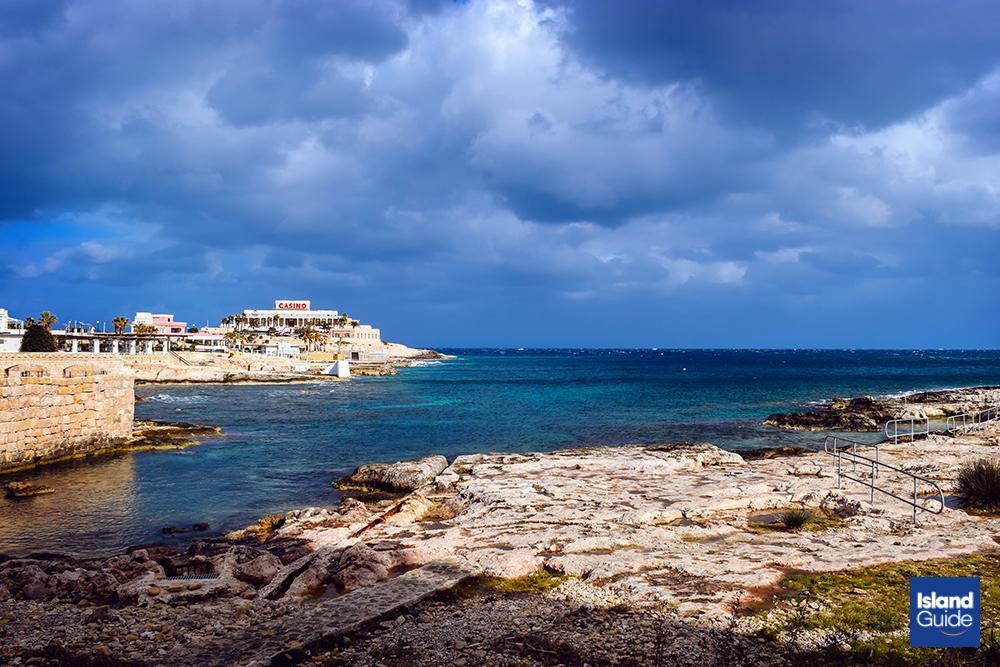
Favignana Island not only stands out for its natural beauty and historical riches but also for its touristic importance. Known as the jewel of the Mediterranean, this island attracts visitors through a combination of several factors.
- Natural Beauty: With its turquoise waters, white sandy beaches, caves, and unique coastline, Favignana appeals to nature enthusiasts. The island’s natural beauty offers a unique experience for visitors seeking a peaceful and tranquil holiday.
- Seafood and Culinary Culture: The island’s famous tuna and other delicious seafood are part of the traditional Sicilian cuisine. Visitors experience a cultural feast by trying these special flavors at local restaurants.
- Historical and Cultural Riches: Favignana has a rich history dating back from ancient times to the present day. Ancient Roman ruins, medieval castles, and historical buildings constitute the island’s cultural heritage, attracting history and culture enthusiasts.
- Touristic Activities: Favignana offers a variety of tourist activities such as water sports, diving, snorkeling, cycling tours, and hiking. It is an ideal destination for those who want to explore and discover the surroundings.
- Ideal Weather Year-Round: Similar to Sicily’s general climate, Favignana generally offers mild and sunny weather. Therefore, the island attracts tourists year-round.
Favignana Island promises an unforgettable holiday experience with its unique offerings, natural beauty, and cultural heritage. Its tourist appeal significantly contributes to Sicily’s overall tourist attractiveness. In the next section, you can find more information about transportation and accommodation on the island.
Activities and Entertainment on Favignana Island: Add Color to Your Vacation
Favignana Island offers not only its natural beauty and historical riches but also a variety of activities and entertaining options for visitors. Here are some activities and entertainment choices you can enjoy on Favignana:
- Sea and Beach Activities: You can go snorkeling in the crystal-clear waters of the island or join diving tours. Additionally, you can explore the island’s beauty from the water by renting a canoe or a sea bike.
- Nature Walks and Bicycle Tours: Favignana is famous for its natural beauty, and the island offers various nature walks and bicycle tours. Participating in these tours allows you to explore the rural areas of the island.
- Fishing and Boat Tours: Among the sea activities, there are fishing tours available. You can also take boat tours around the island, visiting other Egadi Islands and creating unforgettable moments at sea.
- Art and Cultural Events: Cultural events and art exhibitions on the island provide an opportunity to discover local artists’ works. Additionally, you can join guided tours exploring the island’s historical ruins and architectural structures.
- Gastronomy Tours: You can join gastronomy tours to discover local flavors and experience the traditional cuisine of the island. Dishes featuring tuna are a staple of the local cuisine.
- Entertainment and Nightlife: While the nightlife in Favignana is generally calm, you can still have a pleasant evening at local bars and taverns. Especially during the summer months, events and concerts add vibrancy to the island.
Favignana Island caters to all kinds of travelers with its various activities and entertainment options. Activities that connect you with nature allow you to create enjoyable memories in the island’s serene atmosphere.
Accommodation Recommendations
Accommodation options on Favignana Island are typically found in the city center and various regions of the island. The island generally offers small hotels and guesthouses, holiday resorts, and boutique accommodation options. Here are some recommendations to consider when staying on Favignana Island:
- Hotel Cave Bianche: This hotel stands out with its modern amenities and rooms overlooking the sea. It is located close to the center of the island, offering guests a comfortable stay.
- Calamoni Case Vacanza: This accommodation option is situated near the island’s natural beauty. It features fully equipped apartments and terraces.
- Residence Favignana: Located near the center of the island, this accommodation option is known for its spacious apartments and terraces with garden views. It provides easy access to the beaches.
- Cala La Luna Resort: Overlooking the Tonnara del Secco cove, this holiday resort stands out with its stylish design and modern amenities. It offers facilities like a spa and an outdoor swimming pool.
- Dimora dell’Olivastro: This accommodation option, located near the historical center of the island, is decorated in the traditional Sicilian house style. It provides easy access to the historical and cultural sites in the city center.
- Villa Agave Favignana: Situated in a peaceful area of the island, these villas are surrounded by private pools and spacious gardens. They are often an ideal choice for families or groups.
These options offer a range of choices for different preferences and needs during your stay on Favignana Island.
Conclusion
Favignana Island, one of the jewels of the Mediterranean, stands out not only for its natural beauty and historical richness but also for its unique seafood, cultural heritage, and various activities. The island’s location, its historical transformations, the tuna industry, and traditional festivals enhance Favignana’s tourist appeal.
Visitors are offered ancient ruins reflecting the island’s historical texture, medieval castles, and structures adorned with traditional Sicilian architecture. Furthermore, the island’s natural beauty, turquoise waters, white sandy beaches, and mysterious caves allow you to create unforgettable memories.
A holiday on Favignana Island combines delicious cuisine filled with seafood, various activities like nature hikes and snorkeling, and colorful memories from local festivals. Additionally, the island’s tranquil atmosphere promises a vacation intertwined with its natural beauty.
There are various accommodation options available, including hotels, resorts, guesthouses, and private villas, allowing you to choose the one that suits your preferences.
Favignana Island brings together history, nature, flavors, and entertainment to offer visitors an unforgettable experience. This jewel of the Mediterranean stands out as a destination worth exploring.
Frequently Asked Questions (FAQ)
There are various activities to do on Favignana Island. Activities such as snorkeling, diving, cycling tours, hiking, water sports, and participation in local festivals can add color to your time on the island.
The tuna industry has played a significant role in the history of Favignana Island. It has revitalized the island’s economy, influenced its cultural heritage, and become one of the factors defining the island’s present-day tourist appeal.
Beaches like Cala Rossa, Cala Azzurra, and Cala Rotonda are among the most famous beaches of Favignana Island. These beaches are known for their turquoise waters and white sands.
Various festivals are held on Favignana Island, such as the Tuna Festival, Couscous Fest, and the Sant’Anna Festival. These festivals are significant events that reflect the island’s cultural and traditional way of life.




